A family were left stunned when they discovered the skeleton on a 60,000-year-old mammoth in their firm’s gravel pit.
The almost complete set of pristine fossils were uncovered in May when Marty McEwen and his grandson Ethan Beasley were digging at the family business in Texas.
After Mr McEwen hit a 6ft-long (1.8m) tusk with an excavator, the pair alerted nearby palaeontologists who carefully removed layers of mud which are millennia old.
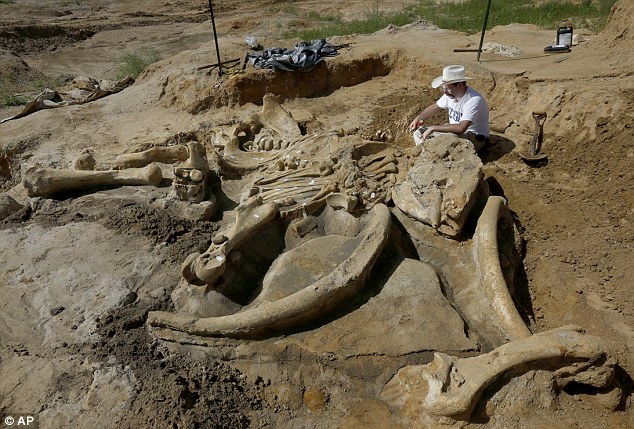
A family were left stunned when they discovered the skeleton on a 60,000-year-old mammoth in their firm’s gravel pit. Perot Museum of Natural History Fossil Preparator Ron Tykoski, excavates a preserved mammoth skeleton found by gravel pit owner Wayne McEwen, in Ellis County, Texas
Experts believe the creature’s relatively small size – it would only have been around 9ft (2.7m) tall – shows it is a female mammoth.
Tom Vance, a palaeontologist from nearby Navarro College, Texas, believes the animal died after she fell on her left side.
Remarkably it appears as if the clearly visible skull, ribs and lower jaw have been relatively untouched bar a few missing leg bones.
Mr Vance said: ‘I am extremely excited about this outstanding find – it’s very unique for North Central Texas.

The skeleton has been donated the nearby Perot Museum in Texas where it will be examined thoroughly

It is estimated that the skeleton could be between 20,000 and 60,000 years old. It will be transported to a permanent home at the Perot Museum of Nature and Science in Dallas, Texas
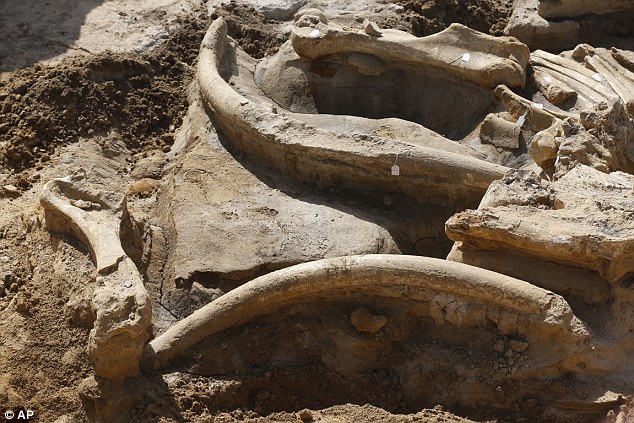
The creature’s relatively small size – it would only have been around 9ft (2.7m) tall – shows it was a female
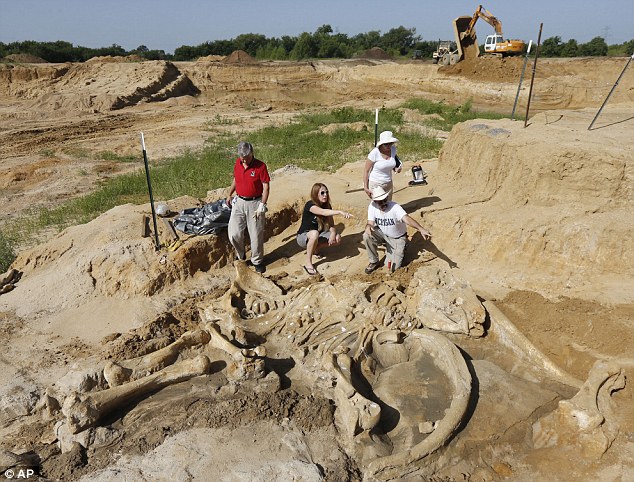
‘We were very excited to discover the mammoth in our sand pit and realise it was 90 per cent complete,’ Mr McEwen said. To protect the precious fossil, the McEwens have chosen not to disclose the excavation site
‘What is so meaningful is to know that this animal walked through our backyard thousands of years ago.’
‘We were very excited to discover the mammoth in our sand pit and realise it was 90 per cent complete,’ Mr McEwen added.
‘One of the greatest joys in this whole thing was to meet and see the excitement on the faces of the many volunteers.
‘It needed to stay in North Texas so it can be enjoyed for a long time to come.’
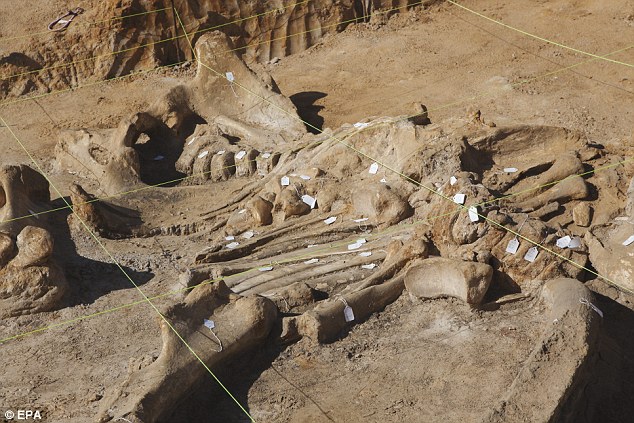
It appears as if the skull, ribs and lower jaw have been relatively untouched bar a few missing leg bones
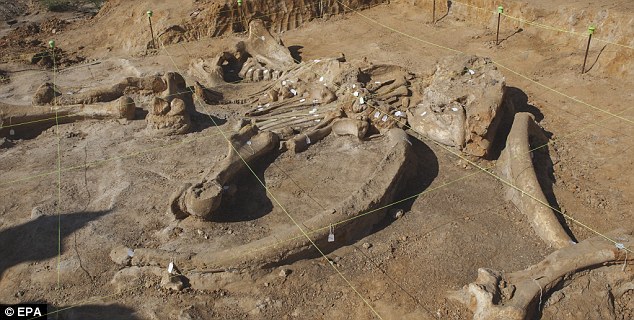
Ron Tykoski, the museum’s palaeontologist, said: ‘The McEwens have made a huge contribution to science. ‘This fossil is now part of the public trust, meaning scientists can describe it, study it, publish papers on it’
The skeleton has been donated by the McEwen’s to the nearby Perot Museum, Texas where it will be examined thoroughly after being catalogued.
To protect the precious fossil during this transition process, the museum and McEwen family have chosen not to disclose the excavation site.
Ron Tykoski, the museum’s palaeontologist, said: ‘The McEwens have made a huge contribution to science.
‘This fossil is now part of the public trust, meaning scientists can describe it, study it, publish papers on it and display it from this time on.
‘Without their gift, this magnificent creature might have gone onto the auction block, never to be seen again.
‘It would have been a huge loss for science.’
Resurrecting a prehistoric creature might seem like a sci-fi dream, but scientists say they have taken a step towards cloning the extinct woolly mammoth and there is a ‘high chance’ it will happen.
Experts expect to extract ‘high quality DNA’ from a 43,000 year old carcass found in Siberia.
The announcement follows the autopsy on the female mammoth found last year in permafrost in Russia’s diamond region of the Sakha Republic, which is also known as Yakutia.
There was palpable excitement among the team which included scientists from Russia, the UK, the USA, Denmark, South Korea and Moldova,’ The Siberian Times reported.
The researchers expect test results on blood extracted from the woolly mammoth to provide the genetic material needed to attempt to clone the animal.
Woolly mammoths finally died out in eastern Siberia around 4,000 years ago.
Radik Khayrullin, vice president of the Russian Association of Medical Anthropologists, said: ‘The data we are about to receive will give us a high chance to clone the mammoth.’
But he called for responsibility in bringing the ancient beast back to life, urging that competing teams seeking to win a race to clone the mammoth, not to play God for the sake of it.

